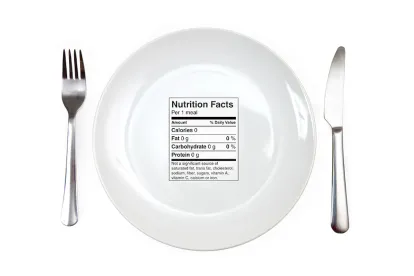On March 24, 2023, FDA issued its draft guidance for industry regarding the use of “Dietary Guidance Statements” on food labeling. FDA defines “Dietary Guidance Statements” as voluntary labeling statements, images, or words used on food packaging that convey that the food item is part of, or contributes to, a “nutritious dietary pattern.” As noted by FDA, Dietary Guidance Statements provide manufacturers with an additional set of messages that can be used on-pack, beyond nutrient content claims or “healthy” claims. FDA has issued the guidance as part of its wider effort to create a healthier food supply for Americans and ensure consumers have more, and “better”, nutrition information about the foods they purchase.
Key takeaways from the guidance are as follows:
-
Dietary Guidance Statements, Defined. Dietary Guidance Statements are words or vignettes which represent that consumption of a particular food item will contribute to an overall healthy diet. Examples of these claims include, “make half your grains whole grain”; “choose fat-free or low-fat dairy products instead of full-fat dairy options”; and “the Dietary Guidelines for Americans recommends eating fruits and vegetables as part of a balanced diet. This food has ½ cup of broccoli per serving.” They may also include the use of USDA’s “MyPlate” symbol on food packaging.
-
The Draft Guidance Incorporates The “Food Group Equivalents” Concept. To use a Dietary Guidance Statement on a food label, FDA’s position is that the food item should contain “a meaningful amount” of the food or food groups that are the subject of the Statement. This “meaningful amount” criteria is quantified by FDA’s “food group equivalents” standard. The standard and criteria are discussed in more depth in a prior publication on the proposed “healthy” regulations and in the 2020-2025 Dietary Guidelines. The amount of the “food group equivalent” required for the food item will vary depending on the type of food item (single food, mixed food item, main dish, or meal).
-
The Food Bearing The Dietary Guidance Statement Should Not Include Certain Nutrients In Excess Of Certain Amounts. Under the draft guidance, food items labeled with a Dietary Guidance Statement should not exceed certain nutrient levels for saturated fat, sodium, and added sugars. The recommended nutrient levels vary depending on the type of food item, with the most flexibility available for main dish and meal products. Food manufacturers should take a close look at the proposed guidance, and in particular Appendix 3 thereto, to confirm how it applies in specific circumstances.
-
Dietary Guidance Statements Must Be Substantiated, Such As Through Consensus Reports. To further its public health agenda, FDA requires that Dietary Guidance Statements are supported by evidence-based scientific research on dietary patterns, such as widely accepted dietary recommendations developed by qualified experts who have conducted a comprehensive review using current scientific evidence. FDA offers a demonstrative list of appropriate consensus reports at page 16 of the draft guidance. FDA suggests food manufacturers reference the key or principal recommendations from consensus reports when they make Dietary Guidance Statements (i.e., the key conclusions of the reports, which are typically emphasized in a box or highlighted in an executive summary). A food manufacturer’s Dietary Guidance Statement does not have to exactly match the verbiage of a consensus report’s key or principal recommendation.
-
Dietary Guidance Statements Are Not To Be Used On Supplement Packaging. FDA notes that current dietary guidelines recommend that Americans meet their nutritional needs through consumption of whole foods, as opposed to supplement-type products. Consequently, FDA’s position is that Dietary Guidance Statements are not to be used on supplement products.
-
Dietary Guidance Statements Are Not Yet To Be Used On Foods For Infants And Children Under Age 2. Because the nutritional needs for these youngest population groups are different than older populations, FDA intends to subsequently consider how Dietary Guidance Statements could or should be used on food items intended for young children.
FDA is accepting comments on this guidance through June 26, 2023. Notably, when the guidance becomes final, it – like all FDA guidance (and unlike FDA regulations) – will not be binding on industry. Still, FDA hopes that food manufacturers will make use of Dietary Guidance Statements to help consumers make more informed purchasing decisions. FDA also hopes that food manufacturers will consider reformulating products in order to use these Statements.




 />i
/>i
